What Is an Intangible Asset? A Simple Definition for Small Business (With Examples)
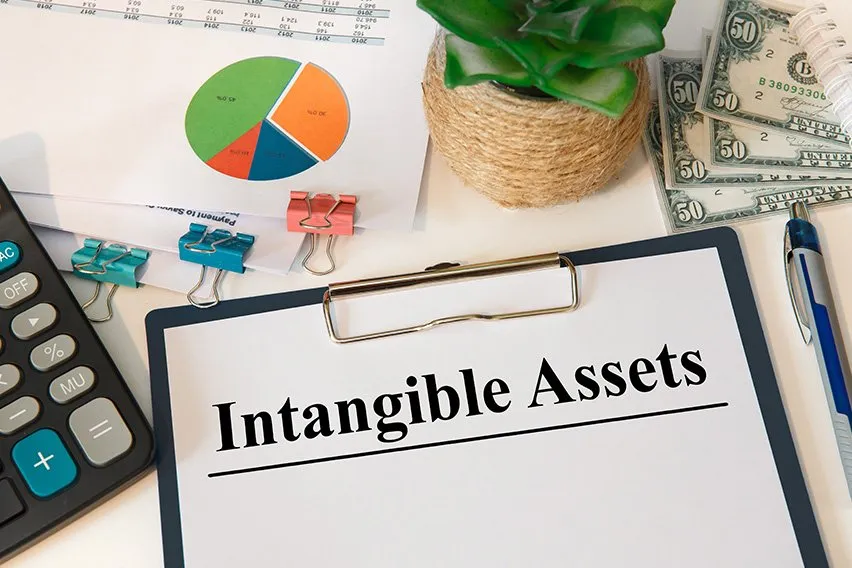
An intangible asset is a resource that has no physical presence and has long-term value for a business. Copyright and a company’s reputation are considered intangible assets. They have value because a business has sole legal or intellectual rights to them and they can help buy back destroyed tangible assets like equipment, according to Business Dictionary.
In this article, we’ll cover:

What Is an Intangible Asset?
In accounting, an intangible asset is a resource with long-term financial value to a business. It also isn’t a material object.
The meaning of intangible is something that can’t be touched or physically seen, according to the Cambridge Dictionary. Intangible resources don’t exist physically, though they still have value.
Types of intangible assets include a business’s reputation, copyrights, trademarks and brand recognition.
Purpose of Intangible Assets in Business
Intangible assets improve a small business’s long-term worth as opposed to tangible (physical) assets like equipment or computer hardware that are used to calculate a business’s current worth.
Intangible assets have value thanks to the sole legal or intellectual rights they enjoy. Intangible assets also improve the value of other assets.
- For example, Coca Cola may have a vast inventory. But the value of that inventory is greatly increased by intangible assets like brand recognition and a good reputation.
Intangible assets can’t be used as a guarantee (“collateral”) to get loans, unlike tangible assets that lenders can seize if the loan isn’t paid back.
But if a company’s tangible resources are destroyed then its intangible assets can help rebuild them.
- For example, a copywriter’s computer hardware is destroyed by a flood in her apartment. She is an excellent writer with a good reputation. When her clients hear about the flood, they try to create new projects for her or refer their friends to her so that she can afford to buy new hardware.
Some companies have intangible assets that are worth far more than their tangible assets, according to Business Dictionary.
- For example, Coca-Cola might have machinery, real estate and inventory that’s high value. But the value of its intangible assets, like its reputation and trademarked branding (such as its logo and packaging), are one of a kind and extremely valuable.
Destroying Intangible Assets
Tangible assets like buildings and machinery can be destroyed by fires and floods. But intangible assets can also be destroyed.
Bankruptcy or other failure of a business will eliminate a business’s intangible assets. Not being careful enough with one’s intangible assets can also diminish or destroy their value.
- For example, a customer post a negative review on a restaurant’s Facebook page. The owner posts a nasty response. Other customers post on the page, protesting the nasty response. People share these posts on their personal Facebook pages. A local news website picks up the story and posts it on their website. More people read and comment on this post. Now plenty of past and potential customers have a negative view of the restaurant. Its reputation is damaged.
Calculating Intangible Assets
To find the financial value of your small business’s intangible assets, use the following formula, according to Business Dictionary:
Market Value of Business – Net Tangible Assets Value = Intangible Assets Value
A note: the above formula only gives an approximate number. Market value is the highest approximate price a buyer would pay (and you, the owner, would accept) for your company.
To find net tangible assets, first list all your tangible assets. Items that are considered tangible assets include, according to the Houston Chronicle:
- Inventory
- Money in your business bank account
- Buildings
- Land
- Machinery
- Furniture
- Computer hardware
- Office supplies (like a postage meter)
Tangible assets are either current (easily convertible into cash) or fixed (not easily convertible into cash). Fixed assets are also called capital assets.
Intangible Assets in Balance Sheets
Assets normally appear on a company’s balance sheet, a common financial statement generated in accounting software. But, intangible assets don’t always appear on balance sheets, according to Accounting Tools.
This is because accounting doesn’t recognize internally-created intangible assets, only acquired intangible assets such as those acquired in the process of purchasing another business or bought individually.
In the below example, patents, an intangible asset, are included on the balance sheet as they need to be amortized (the value needs to be spread over each accounting period).
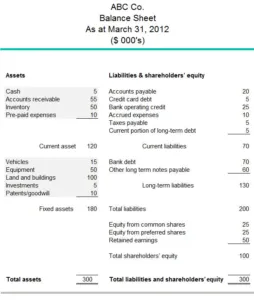
Source: The Business Development Bank of Canada
FreshBooks makes it easy to generate balance sheets via their cloud accounting software.
People also ask:
- What Would Be Considered an Intangible Asset?
- What Is an Example of an Intangible Asset?
- What Are the Types of Intangible Assets?
- What Are Intangible Goods?
What Would Be Considered an Intangible Asset?
Here is a list of item that are considered intangible assets, according to Bizfluent:
- Brand equity (recognition)
- Intellectual property (i.e. know-how)
- Company reputation
- Goodwill
- Copyrights
- Trandmarks
- Patents
- Franchises
- Intellectual property
- Customer lists
- Domain name
- Employment contracts
- Licensing agreements
- Lease agreements
- Client relationships

What Is an Example of an Intangible Asset?
Goodwill is considered an intangible asset, according to Dummies. It comes into existence when a business is bought for a higher price than the market value of its net assets (total asset value minus liabilities such as debts). It is of long-term financial value but has no physical presence.
Most assets have a fair market value. For example, the value of cash in the market is the same entered in the accounting books.
Here is an example of goodwill in action:
- A web developer buys his competitor for $100,000. But, the value of his competitor’s assets is only $80,000. The purchase price was $20,000 more than the value of the competitor’s net assets. So the web developer now has $20,000 worth of goodwill as an asset.
What Are the Types of Intangible Assets?
There are two types of intangible assets, according to the Houston Chronicle:
Limited-Life Intangible Assets
These assets have a limited life span. They include goodwill, copyright and patents.
- For example, a patent only legally lasts for 17 years. Its life span is considered even shorter if a new invention makes the patent’s technology irrelevant.
In accounting, limited-life intangible assets are amortized over the exact period they’re deemed useful. Amortization means dividing the cost of the asset according to how much it was used in each accounting period.
- For example, if you use your patent every month, take the cost of the patent and divide it over 17 years. If a patent cost $10,000, it costs you $588.23 per year or $49.02 a month.
Unlimited-Life Intangible Assets
These assets don’t have a definite life span and include trademarks or brand. It’s impossible to tell how long a trademark will have value, unlike a patent which has a legal expiry date.
In accounting, unlimited-life intangible assets are not amortized but tested for impairment annually. Still, the IRS doesn’t recognize impairment testing for trademarks, goodwill and copyright. Instead, they need to be amortized over 15 years even if they’re useful for a much longer period of time.
If the asset’s gotten rid of before 15 years, the IRS allows for the loss of value to be accounted for.
What Are Intangible Goods?
Intangible goods are products that don’t have a physical form. They are increasingly part of the economy and make life a lot easier for startups, according to the Houston Chronicle. There’s no need to store or mail them and adding inventory is often just a matter of clicking a few buttons.
Phone and tablet apps, software, photographs and media content like books and songs are all examples of intangible goods.
Intangible goods are not intangible assets.
- For example, a company makes business collaboration software. The software is not an asset itself but any trademarks associated with the branding or copyrighted software code are intangible assets.
Title Tag: What Is an Intangible Asset? | A Simple Definition for Small Businesses
Meta Description: Get an easy-to-understand definition of intangible assets and discover how your small business’s intangible assets will improve its long-term worth.
RELATED ARTICLES


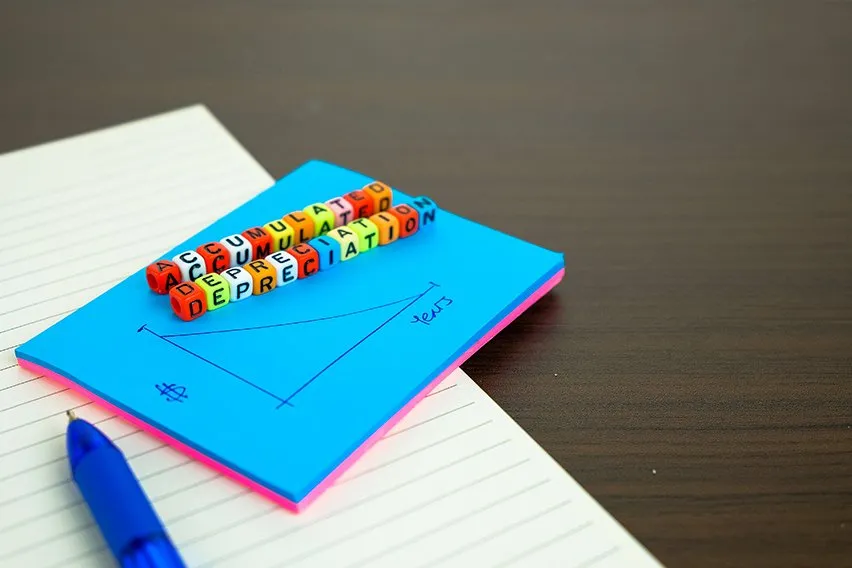 What Is Straight Line Depreciation?
What Is Straight Line Depreciation?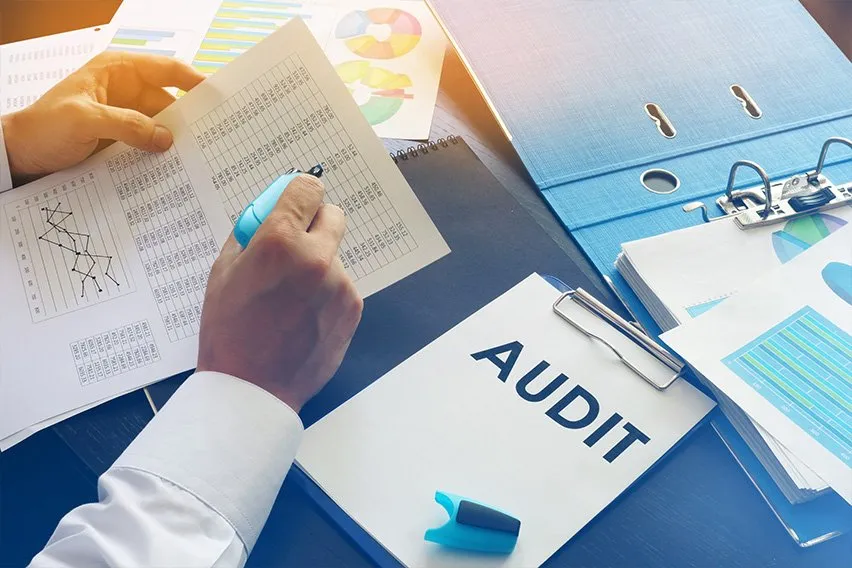 Auditing: Definition, Types, and Importance
Auditing: Definition, Types, and Importance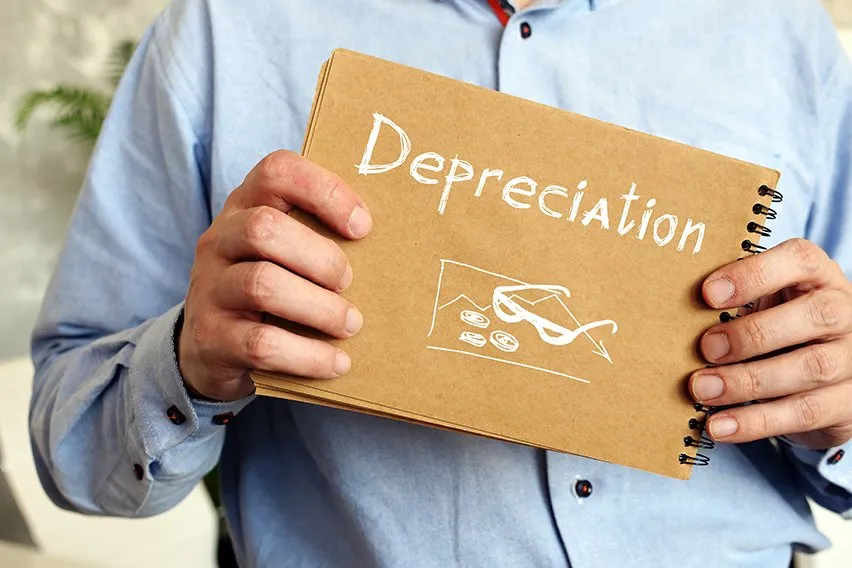 What Is Depreciation: Definition, Types, and Calculation
What Is Depreciation: Definition, Types, and Calculation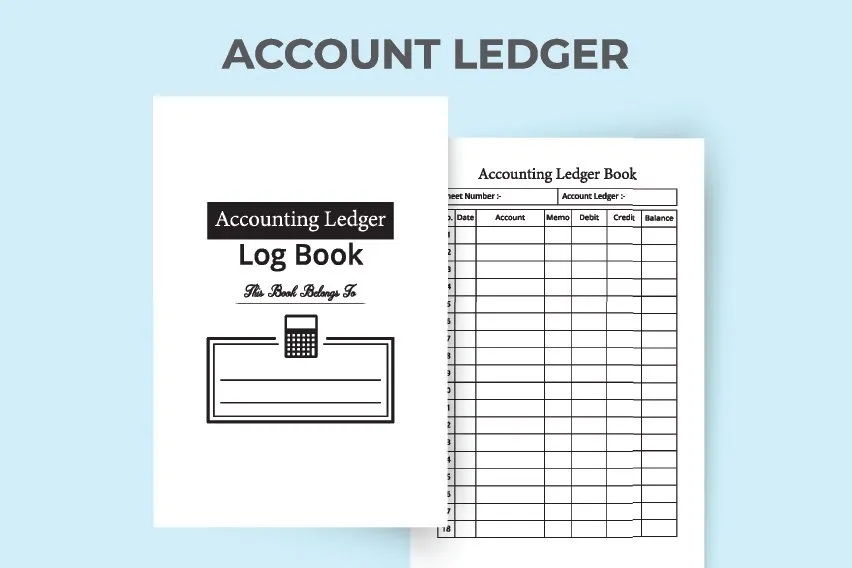 Ledger in accounting: Process, example & free template
Ledger in accounting: Process, example & free template What Is Accounting? The Basics, Explained
What Is Accounting? The Basics, Explained What Is Management Accounting?
What Is Management Accounting?